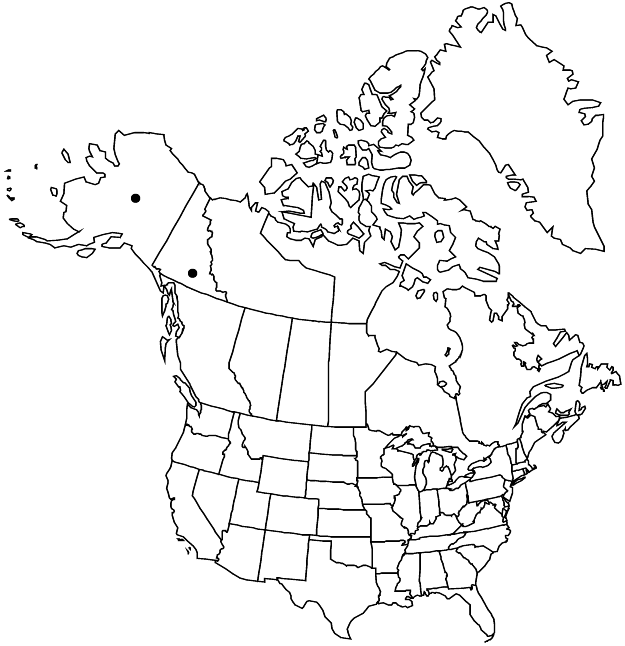Silene uralensis subsp. porsildii
Candollea 22: 27. 1967.
Plants cespitose; taproot stout. Stems erect, simple or branched, stout, 10–35 cm, densely pubescent with long, purple-septate, eglandular and glandular hairs. Leaves: basal numerous, blade 1.5–6 cm × 3–7 mm, somewhat fleshy, subglabrous; cauline in 1–3 pairs, blade narrowly lanceolate, 1.5–4 cm × 1–5 mm. Inflorescences sometimes forked, 1–3(–4)-flowered. Pedicels erect or angled in flower and erect in fruit, stout, usually elongate, 1–10 cm, densely glandular-pubescent with long purple-septate hairs, ± viscid. Flowers erect; calyx veined, ovate-elliptic to broadly campanulate, 11–14(–18) × 8–13 mm, veins brown or purple, densely glandular-pubescent with purple-septate hairs, lobes ovate-triangular, 2–3 mm, margins broad, membranous; corolla dingy purple-red, 11/3–11/2 times length of calyx, claw equaling calyx, limb obovate, 2-lobed, 2–4 mm. Capsules not contracted at mouth, equaling calyx; carpophore 1–2 mm. Seeds sooty brown, winged, round, flat, 2–2.5 mm diam.; wing inflated, broad, strongly rugose. 2n = 48.
Phenology: Flowering summer.
Habitat: Tundra, gravel slopes, talus, cliffs
Elevation: 0-2500 m
Distribution

Yukon, Alaska, Asia (Russian Far East, Siberia).
Discussion
The usually branched stout stems, erect flowers, broad capsule, and very large seeds with broad rugose wing distinguish subsp. porsildii.
Selected References
None.